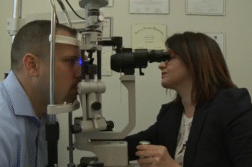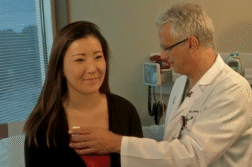TAMPA, Fla. (Ivanhoe Newswire) — From difficulties swallowing to tummy troubles, thousands of kids face digestive and eating challenges. For many families, the journey to understanding what’s wrong can be long and arduous, often involving invasive procedures under anesthesia. But what if answers could be found more quickly and gently? There’s a new approach that could offer clarity in minutes. Inside
A game of catch and cruising down country roads — things can’t get much better for Shark Smith and his buddies.
“We can just like talk while we bike and then we can also cool off too,” he said.
But life wasn’t always easy for Shark. When he was two, swallowing a penny inadvertently set him on a medical journey that revealed a deeper issue: eosinophilic esophagitis.
“They actually said to me, his esophagus looks like that of an 80-year-old man. It’s gray, it’s scarred, his body was kind of attacking it for some reason,” explained Shark’s mom, Jennifer.
Previous doctors told the family if they didn’t find out what foods Shark was allergic to, he could end up on a feeding tube.
“I can’t count how many times we’ve been, I’ve been scoped,” Shark told Ivanhoe.
Seven times according to his mother! He endured round after round of elimination diets, each followed by a traditional endoscopy under anesthesia to check the impact on his esophagus. Then they found Racha Khalaf, MD, division chief and pediatric GI at Muma Children’s Hospital, Tampa General Hospital/USF Health.
“I tell parents that I’m sorry your first scope is not your last scope,” she said.
Shark became one of the first patients to try unsedated pediatric gastrointestinal transnasal endoscopy or TNE. He enjoyed some virtual reality while doctors passed a small camera attached to a wire through his nose.
Taking pictures and biopsies, the last scope showed a new medication, Dupixent, is working!
“They found out that I’m in remission,” said Shark.
And now he can enjoy the simple pleasures of being a kid.
This less invasive TNE procedure takes only about 10 minutes, a significant difference from the two to three hours required with traditional anesthesia.
Contributors to this news report include: Marsha Lewis, Producer; Matt Goldschmidt, Videographer; Roque Correa, Editor.
* For More Information, Email pediatricgi@tgh.org
Free weekly e-mail on Prescription: Health from Ivanhoe. To sign up: http://www.ivanhoe.com/ftk



